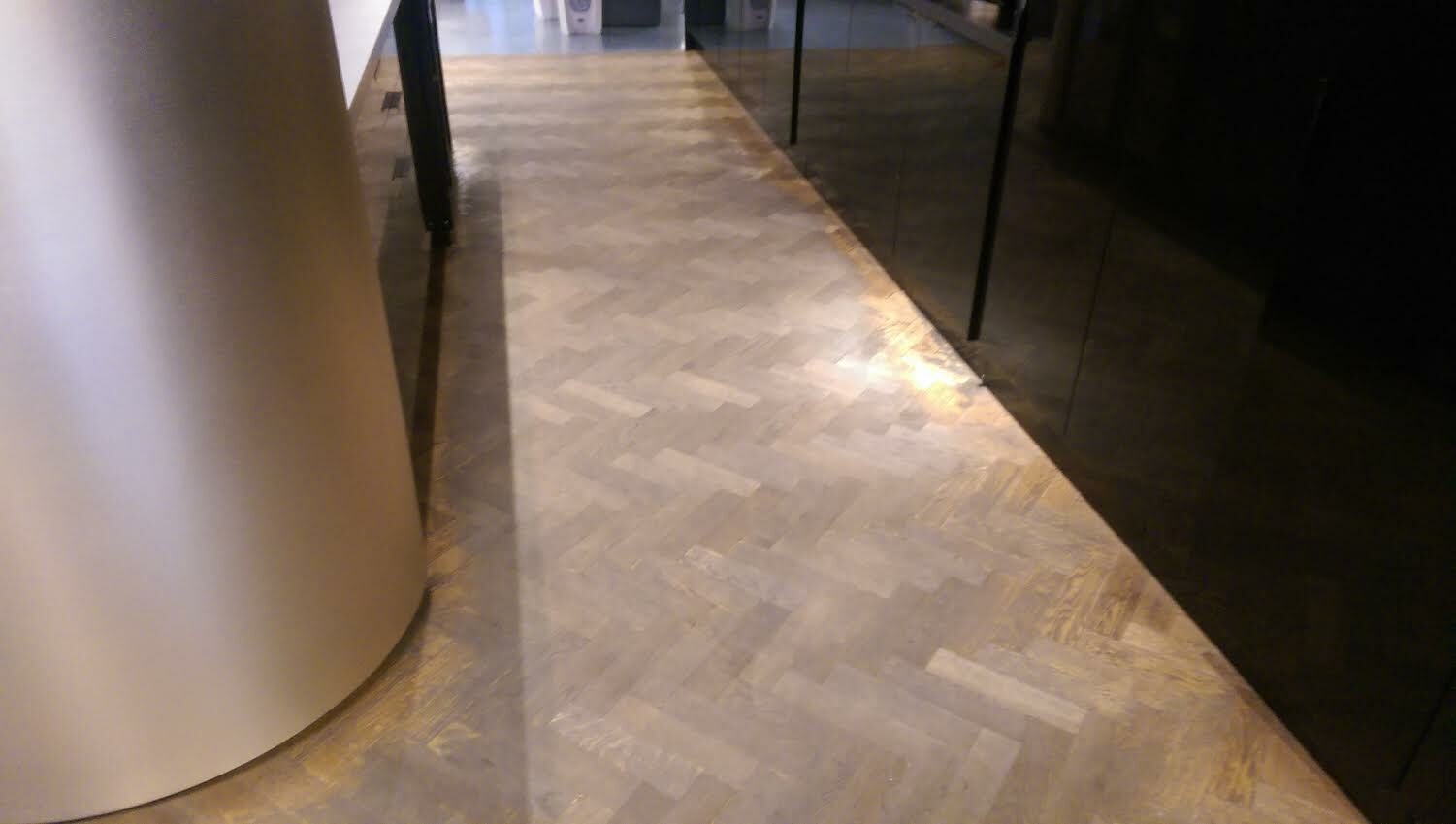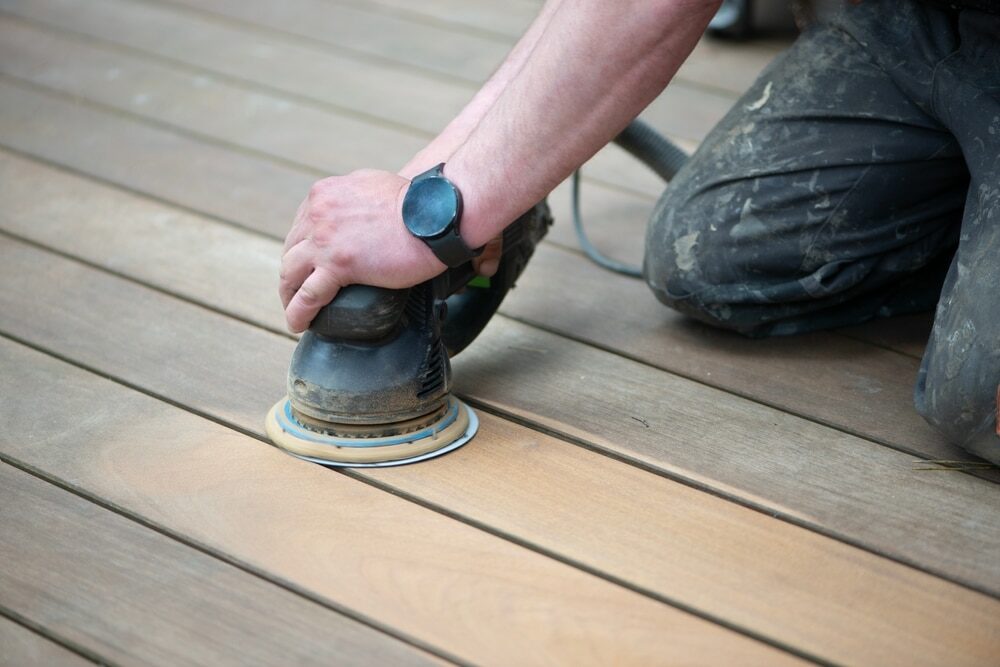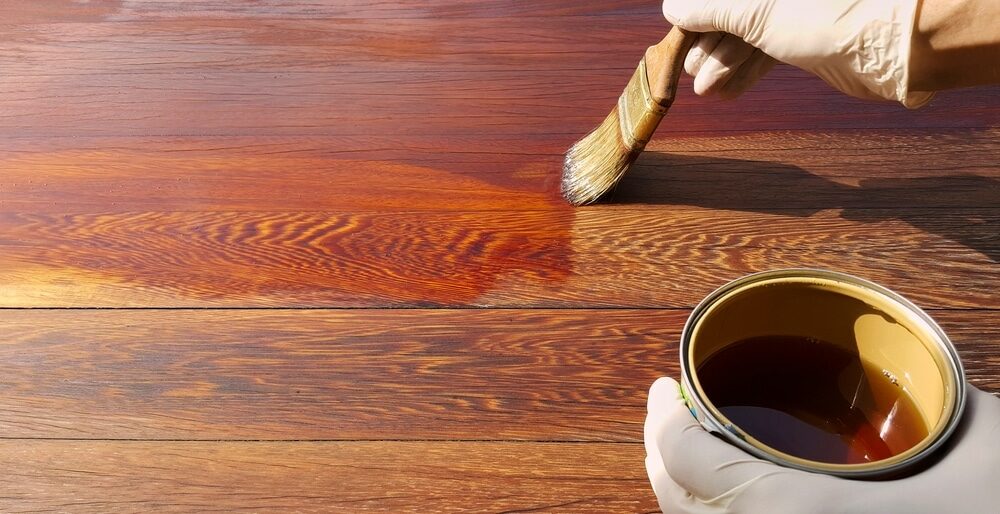London:
Nationwide:
Mastering the Art of Wood Floor Maintenance: A Guide for British Homeowners
Posted on April 18, 2024
Wood Floor Maintenance
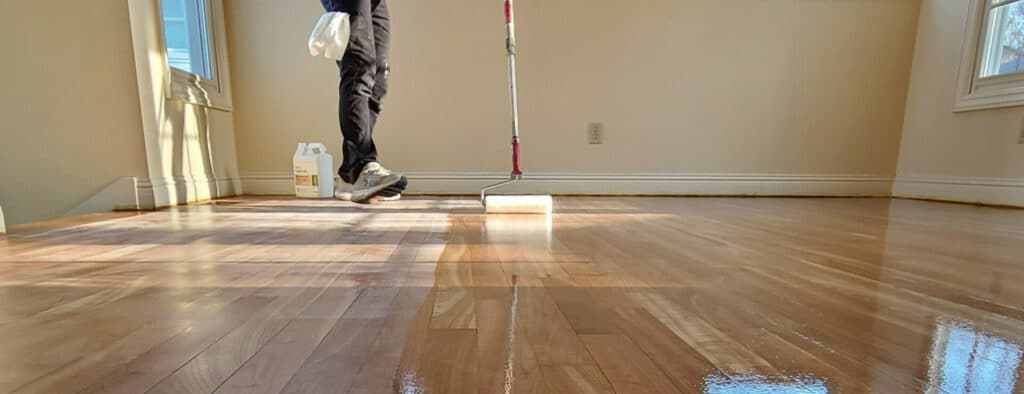
Perfecting Wood Floor Care: A Comprehensive Guide for British Homeowners
This guide is crafted to help you preserve the beauty and integrity of your wood floors, a key feature in many UK homes. Wood floors are not only aesthetically pleasing but also add substantial value to your property. However, they require proper care and attention to maintain their allure and function over the years.
In this introductory section, we’ll explore why maintaining your wood floors is crucial and the benefits that come with it. Properly maintained wood floors are more durable, easier to clean, and retain their finish longer, reducing the need for frequent repairs or replacement. Additionally, they create a healthier living environment by minimising dust and allergens.
Whether you’re new to wood floor maintenance or looking to refine your techniques, this guide provides essential tips and strategies to keep your floors looking their best. So, let’s dive in and learn how to protect and enhance the natural beauty of your wood floors, ensuring they remain a point of pride in your home for years to come.
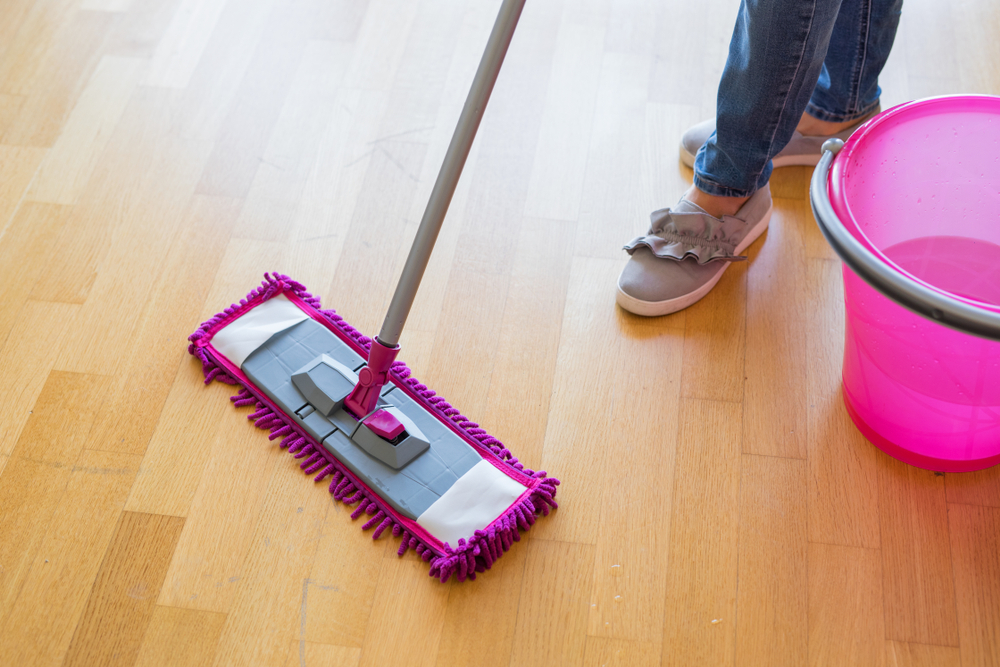
Understanding Your Wood Floors
Before diving into the specifics of maintaining your wood floors, it’s essential to recognize the different types of wood flooring available and understand their unique characteristics. Each type of wood has its own particular needs when it comes to care and maintenance, and being aware of these can help you choose the best practices and products for your floors.
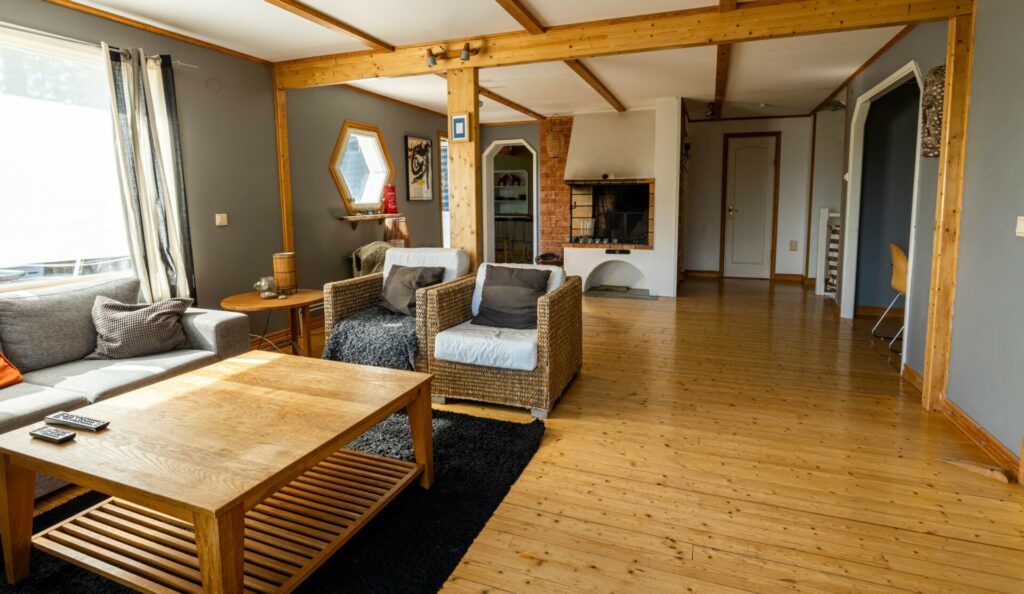
Types of Wood Floors Commonly Found in British Homes
Solid Hardwood
Traditional and widely appreciated, solid hardwood floors are made from single pieces of wood. Popular species include oak, walnut, and maple. These floors can be sanded and refinished multiple times but are sensitive to changes in humidity.
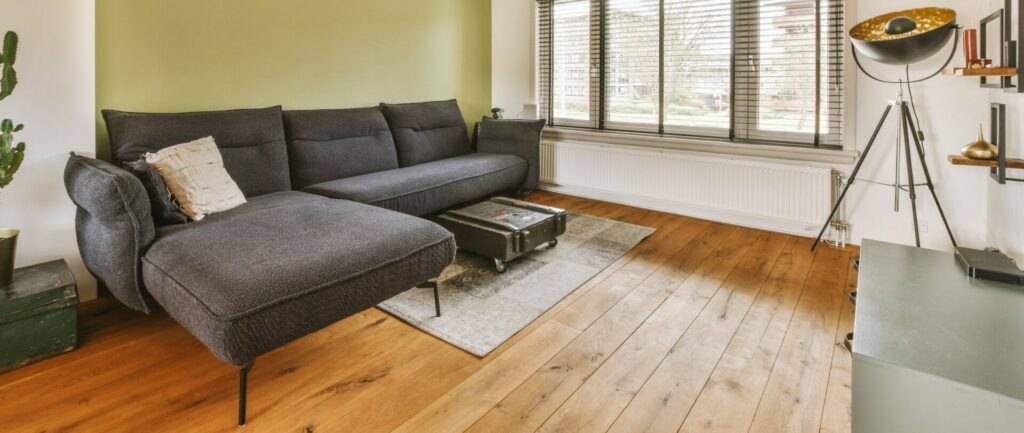
Engineered Wood
Constructed from layers of hardwood and plywood, engineered wood floors offer enhanced stability and resistance to humidity, making them suitable for a variety of environments including kitchens and basements.
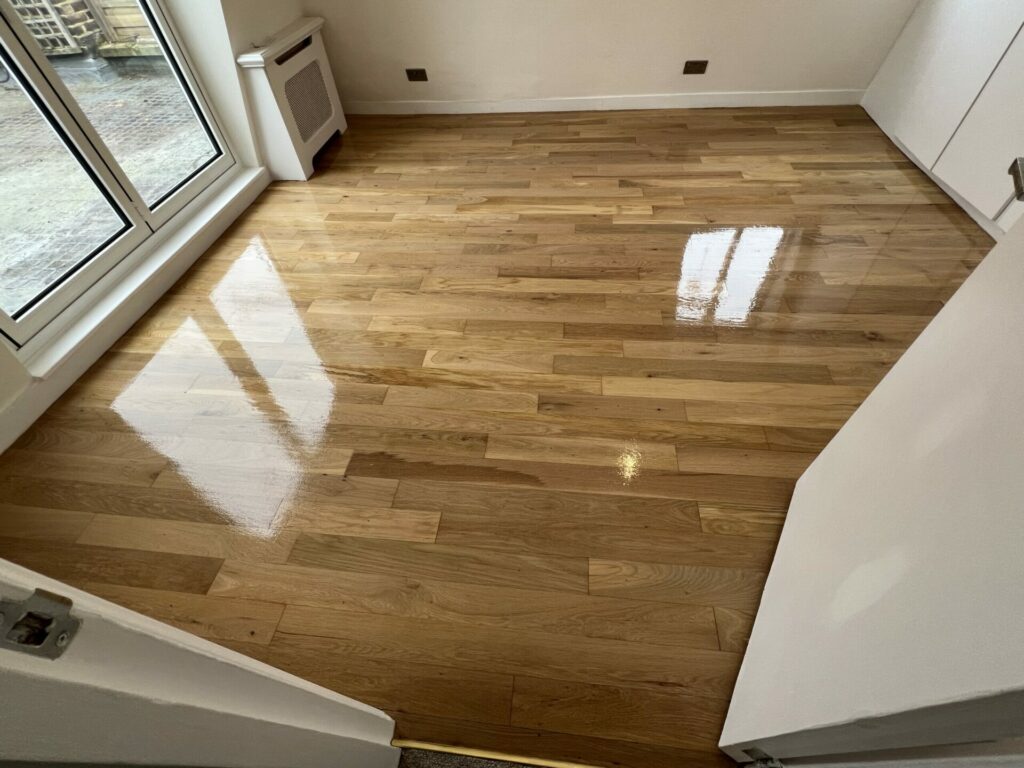
Parquet Floors
Known for their geometric designs, parquet floors are made from small pieces of hardwood fitted together. They add a distinctive aesthetic element but can be challenging to maintain due to the intricacy of their patterns.
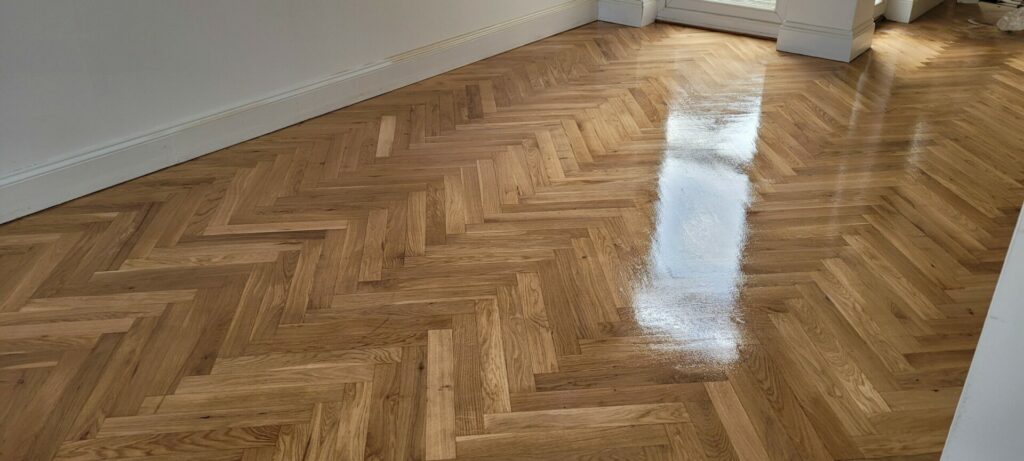
Bamboo Flooring
While technically a grass, bamboo is often grouped with hardwood floors. It offers a contemporary look and comes in various shades. Bamboo is prized for its sustainability and strength, though it requires careful maintenance to avoid scratches.
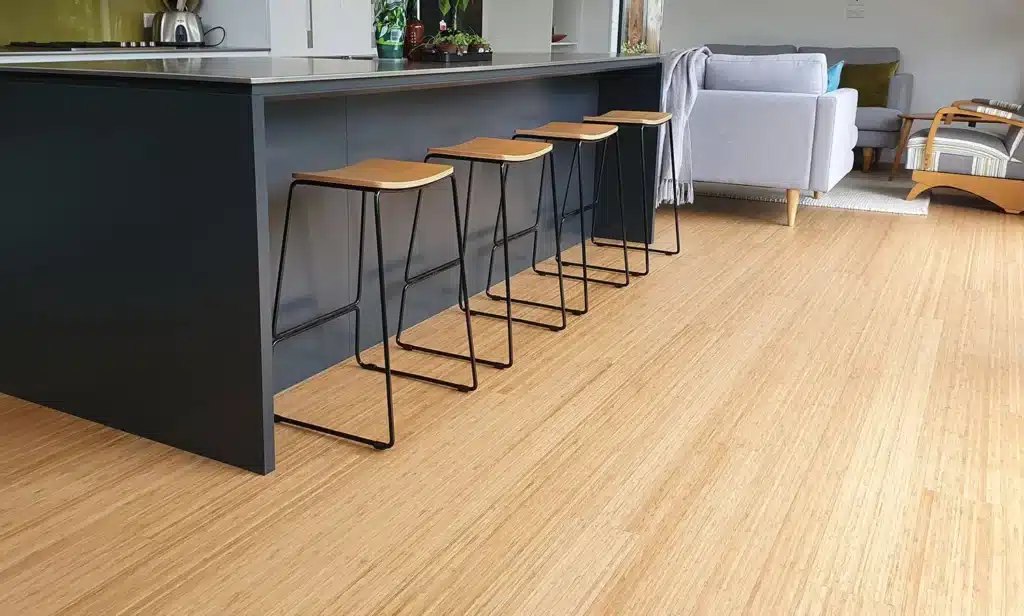
Laminate Flooring
Not a true wood floor but a popular choice due to its affordability and wood-like appearance. Laminate is durable and easy to clean, although it cannot be refinished like genuine wood floors.

Characteristics and Sensitivities of Different Wood Types
Each wood type reacts differently to environmental changes, wear, and cleaning products:
- Moisture Sensitivity: Most wood floors expand and contract with changes in humidity. Solid hardwood is particularly sensitive, while engineered wood offers better resistance to warping.
- Hardness: The hardness of the wood affects its susceptibility to dents and scratches. Harder woods like oak and walnut are more resilient, whereas softer woods like pine can damage more easily.
- Finish and Colour: Different woods and finishes can react uniquely to sunlight and cleaning products. For instance, certain finishes may darken over time or with exposure to direct sunlight, and some cleaning chemicals can damage or dull the finish.
Understanding these aspects of your wood floors will enable you to implement a tailored maintenance routine that enhances their longevity and beauty. By respecting the natural properties of the wood and responding to its specific needs, you can ensure your floors continue to elevate the charm and comfort of your home.
Daily Maintenance Practices
Maintaining wood floors doesn’t have to be a daunting task. Incorporating simple, daily maintenance routines can significantly extend the life and beauty of your floors. Here are effective daily practices that British homeowners can adopt to keep their wood floors in top condition.
Effective Sweeping and Vacuuming Techniques
- Sweeping: Use a soft-bristled broom to gently sweep away dirt and debris. Sweeping in the direction of the wood grain helps collect more particles and reduces the risk of scratching the floor.
- Vacuuming: When vacuuming, ensure that the vacuum cleaner has a setting for hardwood floors. This usually means turning off the beater bar, which can damage the wood surface. Use a soft brush attachment to gently remove dirt from corners and between planks.
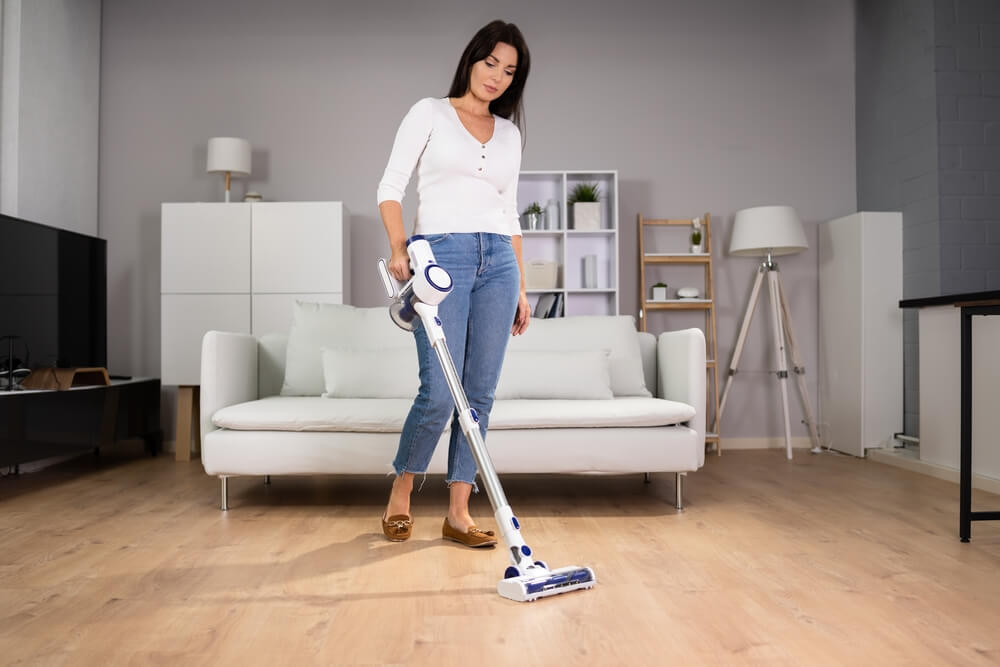
Choosing the Right Cleaning Tools and Products
- Microfiber Mops: A microfiber mop is ideal for daily dusting and can pick up fine particles that brooms might miss. Its soft texture is gentle on wood floors and doesn’t scratch the surface.
- Appropriate Cleaners: Always choose a cleaner specifically designed for wood floors. Avoid using water and vinegar, steam cleaners, or wax-based cleaners as these can damage the finish over time. Instead, opt for a pH-neutral cleaner that won’t strip the finish or harm the wood.

Practical Tips for Daily Care
- Immediate Wipe-ups: Spills should be wiped up immediately with a soft, slightly damp cloth to prevent water from seeping into the seams and causing damage.
- Use of Doormats: Place doormats at all exterior entrances to collect dirt, moisture, and other debris that could be tracked in and scratch the floor. Ensure these mats are cleaned regularly.
- Furniture Pads: Attach felt pads to the legs of furniture to prevent scratches and dents from moving chairs or heavy furniture items. Check and replace these pads regularly as they can wear down and accumulate grit.
- Shoes Off Policy: Encourage a shoes-off policy to avoid bringing in dirt and grime that can scratch wood floors. Especially avoid walking on wood floors with high heels or heavy boots.
- Sunlight Protection: Use curtains or blinds to control the amount of direct sunlight hitting the floors. Prolonged exposure to sun can fade and discolour your wood floors unevenly.
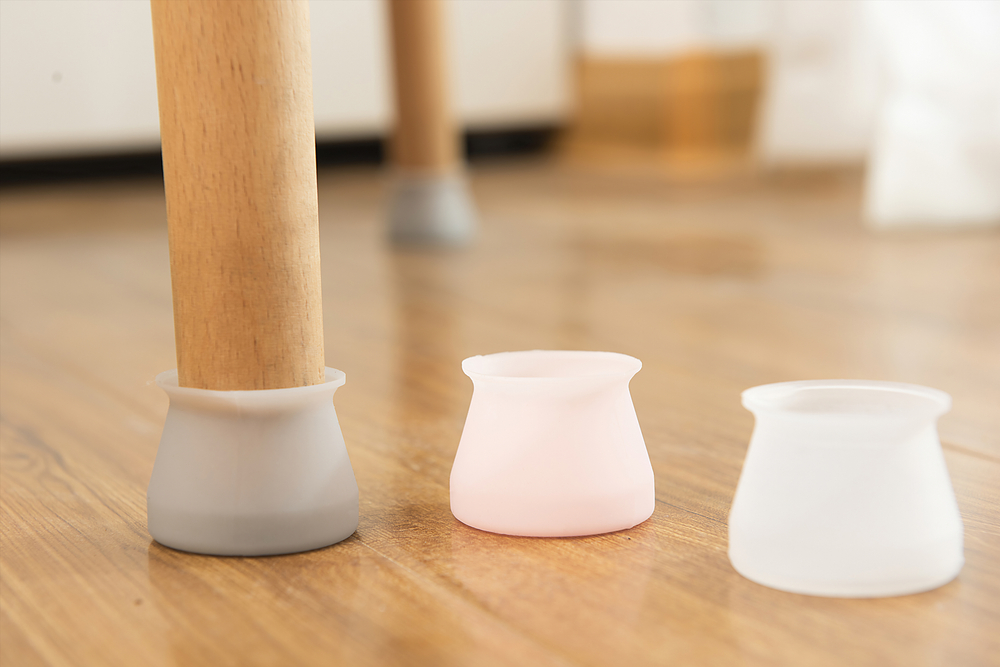
Deep Cleaning Methods
While daily maintenance helps keep your wood floors looking their best, periodic deep cleaning is necessary to remove stubborn dirt, grime, and buildup that can accumulate over time. Deep cleaning restores the natural beauty of your floors and prolongs their lifespan. Here’s a step-by-step guide to deep cleaning your wood floors effectively:
Frequency of Deep Cleaning
- Frequency: Deep cleaning should be performed every 3 to 6 months, depending on foot traffic and environmental factors. Homes with pets or children may require more frequent deep cleaning.
Step-by-Step Guide
- Clear the Area: Remove all furniture and rugs from the room to allow unrestricted access to the entire floor surface.
- Sweep or Vacuum: Begin by thoroughly sweeping or vacuuming the floor to remove loose dirt, dust, and debris. Pay special attention to corners and edges.
- Choose the Right Cleaner: Select a suitable wood floor cleaner that is specifically formulated for deep cleaning. Avoid harsh chemicals or abrasive cleaners that can damage the wood or finish.
- Dilution and Application: Follow the manufacturer’s instructions for diluting the cleaner with water, if necessary. Apply the cleaner to a small section of the floor using a mop or sponge, ensuring even coverage.
- Scrubbing: Use a soft-bristled brush or scrubbing pad to gently scrub the floor, focusing on areas with visible stains or buildup. Work in the direction of the wood grain to avoid causing scratches.
- Rinsing: Once the floor has been thoroughly scrubbed, rinse away the cleaner with clean water. Ensure all traces of cleaner are removed to prevent residue buildup.
- Drying: Use a clean, dry microfiber cloth or mop to dry the floor completely. Excess moisture left on the surface can damage the wood and finish.
- Optional: Buffing or Polishing: For added shine and protection, consider buffing or polishing the floor with a suitable wood floor polish. Follow the manufacturer’s instructions for application.
- Allow to Cure: Allow the floor to dry completely before moving furniture back into the room or placing rugs. This allows the finish to cure properly and prevents damage.
- Preventive Measures: Once the floor is clean, consider applying a wood floor sealer or protective coating to enhance durability and ease of maintenance.
By following these steps, you can effectively deep clean your wood floors, restoring their natural beauty and prolonging their lifespan. Regular deep cleaning not only keeps your floors looking pristine but also ensures they remain a focal point of elegance and charm in your home.
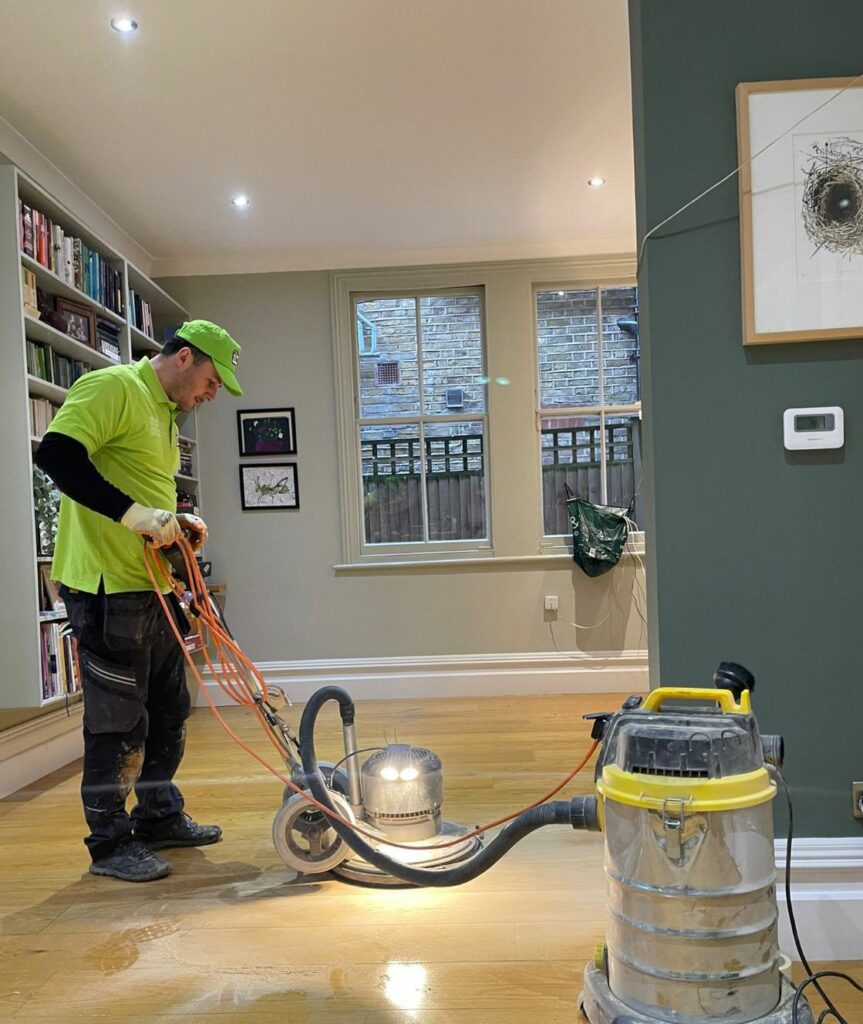
Dealing with Spills and Stains
Spills and stains are inevitable, but prompt action can prevent them from becoming permanent blemishes on your wood floors. Whether it’s a glass of wine, a splash of coffee, or a pet accident, knowing how to address spills and stains effectively is essential for maintaining the beauty of your floors. Here’s a guide on how to tackle common spills and stains:
Immediate Action
- Blot, Don’t Rub: As soon as a spill occurs, use a clean, absorbent cloth or paper towel to blot up as much of the liquid as possible. Avoid rubbing, as this can spread the spill and work it deeper into the wood grain.
- Gentle Wiping: If the spill has already dried or begun to set, dampen a cloth with water and gently wipe the affected area. Avoid using excessive water, as this can damage the wood.
- Use a Neutral Cleaner: For stubborn spills or stains, use a wood floor cleaner specifically formulated for the type of finish on your floors. Apply a small amount to a clean cloth and gently rub the stain in a circular motion.
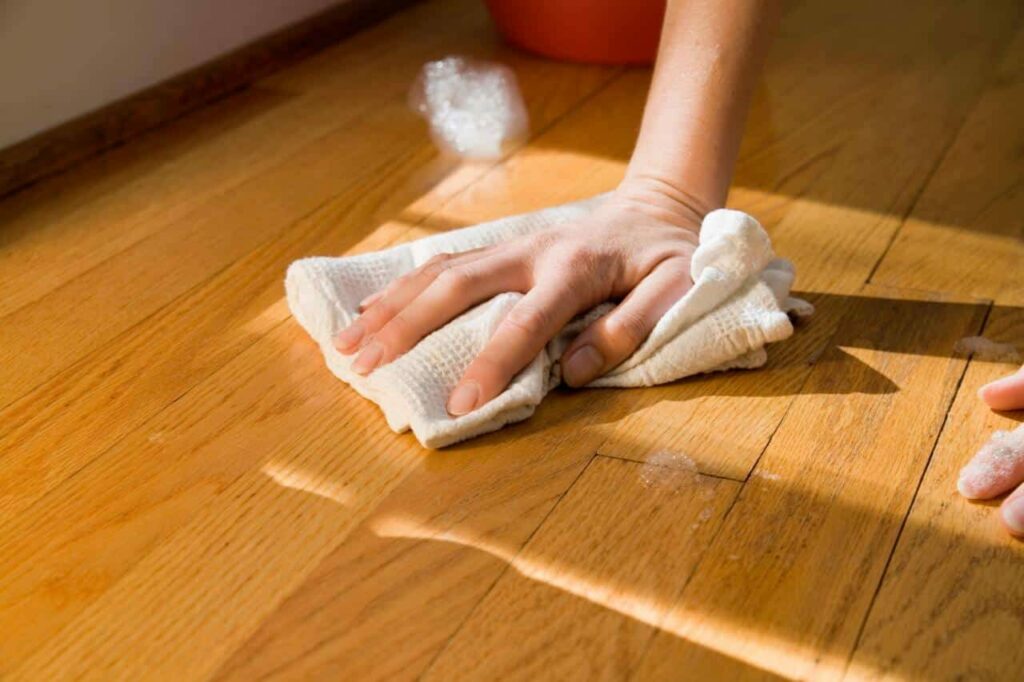
Specific Stain Removal Techniques
- Water-Based Stains (e.g., Coffee, Tea): Blot the stain with a cloth dampened with warm water. If the stain persists, mix a mild detergent with water and gently scrub the area. Rinse with clean water and dry thoroughly.
- Oil-Based Stains (e.g., Grease, Food): Sprinkle baking soda or cornstarch over the stain to absorb excess oil. Let it sit for a few minutes, then brush or vacuum away the powder. Clean the area with a wood floor cleaner and dry thoroughly.
- Pet Stains: Blot up any urine or vomit immediately, then clean the area with a mixture of white vinegar and water. Follow up with a wood floor cleaner to remove any lingering odours.
- Ink or Marker Stains: Dampen a cloth with rubbing alcohol or nail polish remover and gently blot the stain. Be cautious not to use too much liquid, as it can damage the finish.

By following these tips and techniques, you can effectively address spills and stains on your wood floors, keeping them looking clean and pristine for years to come. Remember to always test any cleaning solution on a small, inconspicuous area of the floor first to ensure it doesn’t cause damage or discolouration.
Scratches and Dents: Prevention and Repair
Scratches and dents can detract from the beauty of your wood floors, but with the right preventive measures and repair techniques, you can keep them looking their best. Here’s a comprehensive guide on how to prevent and repair scratches and dents on your wood floors:
Prevention Tips
- Furniture Pads: Attach felt pads to the bottom of furniture legs to prevent scratches caused by sliding or moving furniture.
- Area Rugs and Mats: Place area rugs and mats in high-traffic areas to provide a protective barrier against scratches from foot traffic.
- Remove Shoes: Encourage family members and guests to remove their shoes before walking on the wood floors to prevent scratches from grit and dirt.
- Pet Claw Maintenance: Keep your pet’s claws trimmed to minimize the risk of scratches from their nails.
- Use Floor Protectors: Place floor protectors under heavy furniture and appliances to distribute weight and prevent dents.

Minor Scratch Repair
- Clean the Area: Begin by cleaning the scratched area with a wood floor cleaner to remove any dirt or debris.
- Apply Wood Filler: Use a wood filler that matches the colour of your floor to fill in the scratch. Apply a small amount of filler to the scratch and smooth it out with a putty knife.
- Sand and Buff: Once the filler has dried, lightly sand the area with fine-grit sandpaper to level it with the surrounding floor. Buff the area with a soft cloth to blend the repaired area with the rest of the floor.
- Finish Touch-Up: If necessary, apply a matching wood floor finish to the repaired area to restore shine and protection.
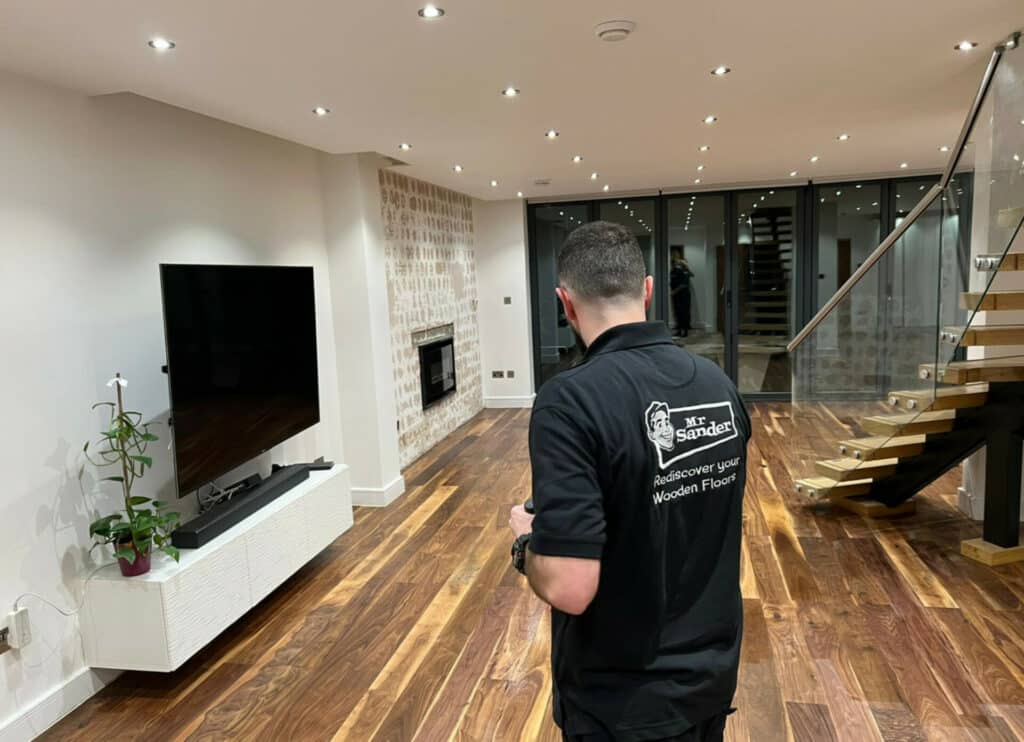
Deep Scratch or Dent Repair
- Assess the Damage: Determine the depth of the scratch or dent. For deep scratches or dents that penetrate the wood, you may need to use a more intensive repair method.
- Wood Putty or Wax Stick: For deeper scratches or dents, fill the damaged area with wood putty or a wax stick that matches the colour of your floor. Follow the manufacturer’s instructions for application.
- Sand and Refinish: After the filler has dried, sand the area with fine-grit sandpaper to smooth it out. Apply a matching wood floor finish to the repaired area and allow it to dry completely.
- Professional Refinishing: If the damage is extensive or the repair attempts are unsuccessful, consider hiring a professional to refinish the affected area or the entire floor.
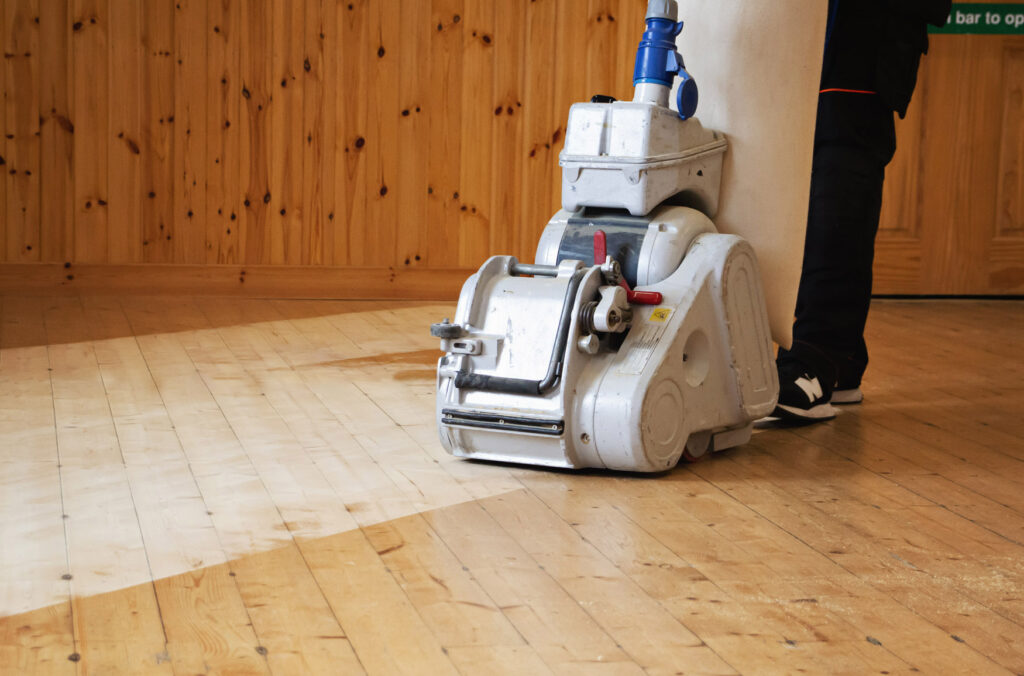
Ongoing Maintenance
- Regular Cleaning: Keep your wood floors clean and free of dirt and debris to prevent scratches from abrasive particles.
- Periodic Maintenance: Inspect your wood floors regularly for signs of wear and damage, and address any issues promptly to prevent them from worsening.

By following these preventive measures and repair techniques, you can keep scratches and dents at bay and maintain the beauty and integrity of your wood floors for years to come. Remember to always test any repair products or methods in an inconspicuous area of the floor first to ensure compatibility and desired results.
The Role of Rugs and Mats
Rugs and mats play a crucial role in preserving the beauty and longevity of your wood floors. They not only enhance the aesthetic appeal of your home but also provide protection against scratches, dents, and moisture damage. Here’s how rugs and mats can help safeguard your wood floors:

Preventing Scratches and Wear
- High-Traffic Areas: Place rugs and mats in high-traffic areas such as entryways, hallways, and living rooms to reduce wear and tear on your wood floors. These areas are prone to scratches from foot traffic, making rugs an effective barrier.
- Under Furniture: Use rugs or mats under heavy furniture such as dining tables, sofas, and chairs to prevent scratches caused by movement and sliding. Furniture pads can also be placed under furniture legs for added protection.
Minimizing Moisture Damage
- Entryways: Position doormats at all entry points to trap dirt, moisture, and debris from shoes. This prevents water from being tracked onto your wood floors, which can cause warping, cupping, and other water-related damage.
- Kitchens and Bathrooms: In areas prone to spills and moisture, such as kitchens and bathrooms, place waterproof mats or rugs to protect the wood floors from water damage. Be sure to clean up spills promptly to prevent seepage beneath the rugs.
Enhancing Comfort and Style
- Warmth and Comfort: Rugs and mats add warmth and comfort underfoot, especially in rooms with hard surfaces like wood floors. They create a more inviting and comfortable environment for relaxing and socializing.
- Aesthetic Appeal: Rugs and mats come in a variety of colours, patterns, and textures, allowing you to enhance the visual appeal of your home decor. Choose rugs that complement the style and colour scheme of your wood floors to create a cohesive look.
Rugs and mats are invaluable accessories for protecting and enhancing the beauty of your wood floors. By strategically placing rugs in high-traffic areas, under furniture, and at entryways, you can minimize scratches, dents, and moisture damage, prolonging the lifespan of your floors. Additionally, rugs add comfort, style, and personality to your home decor, making them a practical and stylish investment for any homeowner.

Professional Care and Maintenance
While regular upkeep is essential for maintaining the beauty of your wood floors, there are times when professional care and maintenance are necessary to ensure their longevity and optimal condition. Professional services offer expertise, specialized equipment, and techniques that can address specific issues and provide a thorough level of care. Here’s a closer look at the role of professional care and maintenance for your wood floors:
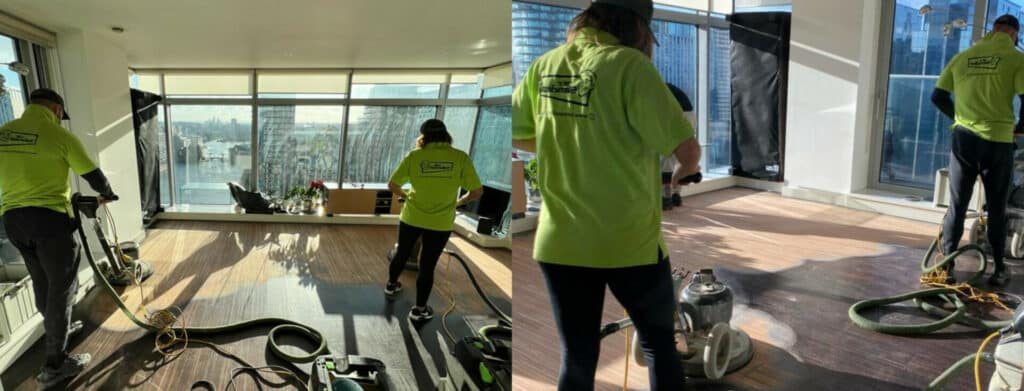
When to Seek Professional Services
- Refinishing: Over time, the finish on wood floors may become worn, scratched, or discoloured. Professional refinishing involves sanding down the surface to remove imperfections and applying a new finish, restoring the floor’s shine and protection.
- Repairing Damage: Deep scratches, gouges, and other significant damage may require professional repair. Experienced professionals can assess the extent of the damage and implement appropriate repair techniques to restore the floor’s appearance and structural integrity.
- Stain Removal: Stubborn stains, such as ink, oil, or pet urine, may be difficult to remove with DIY methods. Professional cleaners have access to specialized products and techniques that can effectively remove tough stains without damaging the wood.
- Water Damage Restoration: Wood floors exposed to water or moisture over an extended period may experience warping, cupping, or mould growth. Professional restoration services can mitigate water damage, dry out the affected areas, and restore the floors to their original condition.
- Specialized Treatments: Some wood floors may require specialized treatments, such as waxing, buffing, or applying protective coatings. Professional technicians can recommend and perform these treatments to enhance the durability and beauty of the floors.
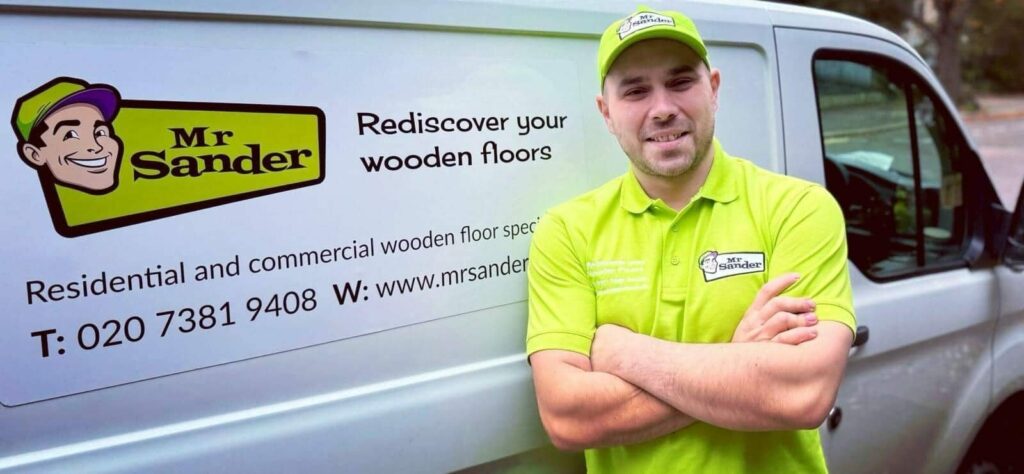
Benefits of Professional Services
- Expertise and Experience: Professional technicians have the knowledge, training, and experience to assess the condition of your wood floors accurately and recommend the most appropriate solutions.
- Specialized Equipment: Professionals use specialized equipment and tools, such as sanders, buffers, and floor finishes, to achieve superior results that may not be achievable with DIY methods.
- Time and Convenience: Professional services save you time and effort by handling complex tasks efficiently and effectively. You can trust that your wood floors are in capable hands, allowing you to focus on other priorities.
- Long-Term Savings: Investing in professional care and maintenance can prolong the lifespan of your wood floors, reducing the need for costly repairs or premature replacement in the long run.
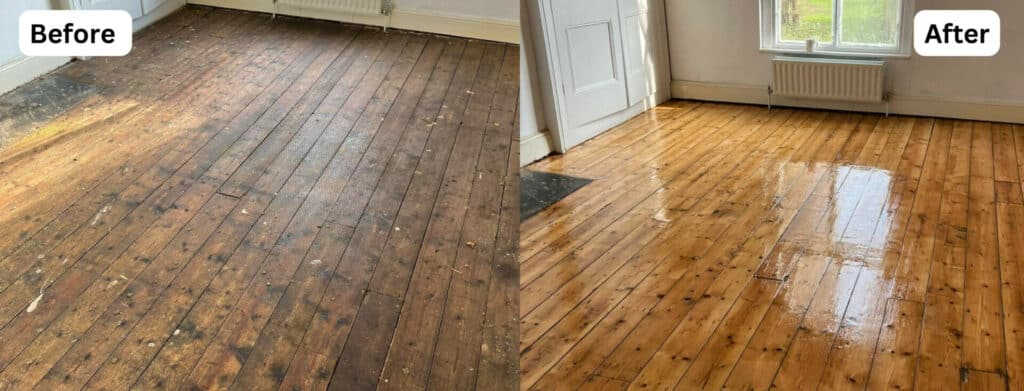
Finding a Reliable Professional
- Ask for Recommendations: Seek recommendations from friends, family, or trusted sources who have experience with wood floor professionals. Online reviews and testimonials can also provide insights into the quality of service.
- Check Credentials: Verify that the professional is licensed, insured, and certified by reputable industry organizations. This ensures that they adhere to professional standards and best practices.
- Request a Consultation: Schedule a consultation with the professional to discuss your needs, assess the condition of your wood floors, and receive a quote for the services.
- Review the Contract: Before hiring a professional, review the contract carefully to understand the scope of work, timeline, and costs involved. Ensure that all terms and conditions are clearly outlined and agreed upon.
By entrusting your wood floors to professional care and maintenance services, you can enjoy the peace of mind knowing that your floors are receiving the highest level of attention and expertise. Whether it’s refinishing, repair, or restoration, professionals can help preserve the beauty and integrity of your wood floors for years to come.
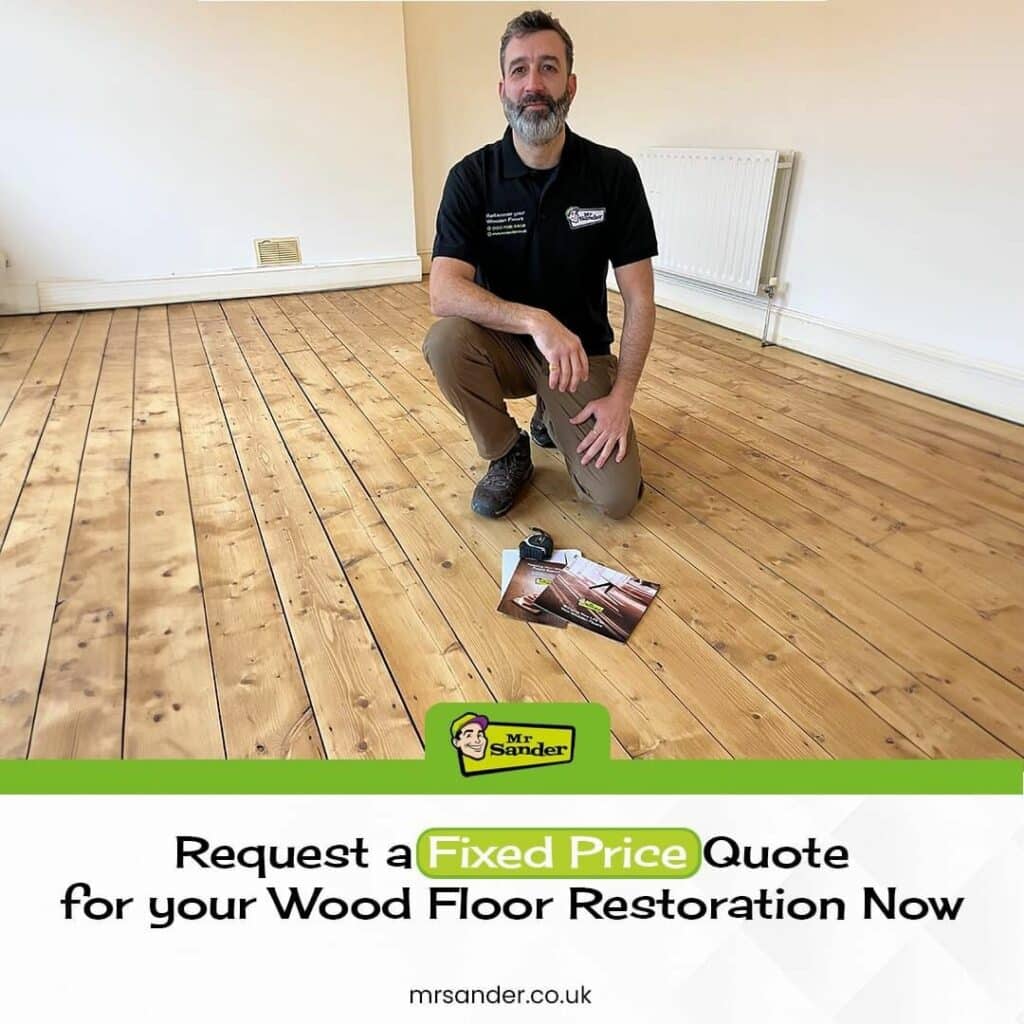
Sustainability in Floor Care
In today’s environmentally conscious world, sustainability is a crucial consideration in every aspect of our lives, including home maintenance. When it comes to caring for your wood floors, adopting sustainable practices not only minimizes environmental impact but also promotes healthier living spaces and preserves natural resources. Here’s how you can incorporate sustainability into your wood floor care routine:
Eco-Friendly Cleaning Products
- Natural Ingredients: Choose cleaning products that contain natural, biodegradable ingredients, such as plant-based surfactants and essential oils. These products are free from harsh chemicals and toxins, reducing exposure to harmful substances for you and your family.
- DIY Cleaners: Create your own eco-friendly cleaners using simple ingredients like vinegar, baking soda, and lemon juice. These natural alternatives are effective at removing dirt and grime without leaving behind chemical residues.

Responsible Consumption
- Minimalistic Approach: Adopt a minimalist approach to floor care by using only what you need and avoiding excess consumption of cleaning products. This reduces waste and conserves resources, leading to a more sustainable lifestyle.
- Refillable Containers: Opt for cleaning products that come in refillable containers or bulk packaging. Refilling existing containers helps reduce plastic waste and lowers your carbon footprint by minimizing packaging materials.
Energy-Efficient Practices
- Energy-Saving Equipment: Use energy-efficient cleaning equipment, such as microfiber mops and vacuum cleaners with high-efficiency motors. These tools require less energy to operate and help reduce overall energy consumption.
- Natural Drying Methods: Whenever possible, allow your wood floors to air dry naturally instead of using energy-intensive drying methods such as heaters or fans. Open windows and doors to promote airflow and expedite drying times.
Sustainable Maintenance
- Regular Maintenance: Implement a regular maintenance routine to keep your wood floors clean and well-maintained. By addressing minor issues promptly, you can prevent the need for more extensive repairs or refinishing in the future, thus extending the lifespan of your floors.
- Protective Measures: Use rugs, mats, and furniture pads to protect your wood floors from scratches, dents, and moisture damage. These preventive measures help minimize wear and tear, reducing the need for frequent maintenance and repairs.
Long-Term Sustainability
- Durable Flooring Options: When installing or renovating your wood floors, choose durable and sustainable materials such as FSC-certified hardwood or reclaimed wood. These options are sourced responsibly and have minimal environmental impact.
- Lifetime Investment: View your wood floors as a long-term investment that adds value to your home and contributes to a sustainable lifestyle. With proper care and maintenance, wood floors can last for generations, reducing the need for frequent replacements and conserving resources.

By incorporating sustainable practices into your wood floor care routine, you can minimize environmental impact, promote healthier indoor environments, and contribute to a more sustainable future for generations to come. With conscious choices and mindful actions, you can enjoy beautiful, eco-friendly wood floors that align with your values and priorities.
Conclusion
Maintaining the beauty and integrity of your wood floors is not only about aesthetics but also about preserving a valuable investment in your home. Through the conscientious application of effective maintenance practices and sustainable principles, you can ensure that your wood floors remain a source of pride and enjoyment for years to come.
In this comprehensive guide, we’ve explored various aspects of wood floor maintenance, from understanding the different types of wood floors to implementing daily care routines and addressing common issues such as spills, scratches, and dents. By following the tips and techniques outlined in this guide, you can protect your wood floors from damage, extend their lifespan, and maintain their natural beauty.
Additionally, we’ve highlighted the importance of sustainability in floor care, emphasizing the use of eco-friendly cleaning products, responsible consumption practices, and energy-efficient maintenance techniques. By adopting sustainable principles in your wood floor care routine, you not only minimize environmental impact but also create healthier living spaces for yourself and future generations.
In conclusion, caring for your wood floors is a labour of love that requires diligence, attention to detail, and a commitment to sustainability. By treating your wood floors with the care and respect they deserve, you can enjoy a lifetime of beauty, comfort, and sustainability in your home.
Thank you for joining us on this journey to mastering the art of wood floor maintenance. Here’s to many years of enjoyment and appreciation for your cherished wood floors!

Sanding
We provide virtually dust-free sanding with our continuous belt machinery with mobile extraction units, giving you a safer environment for your family.
Oiling
This organic finish not only adds beauty to your home but also has exceptional water-repellent characteristics, making it easier to clean and maintain.
Waxing
This natural floor finish offers the softest and most mellow appearance – and leaves your floor able to breath.
Buffing
Using soft buffing machines (and hand-polishing where required) will bring a wonderful sheen to your newly-finished floor.
Repairs
We offer a full assessment of your wooden floors to determine what repairs are needed to provide the perfect working surface for the later stages of sanding, staining and sealing.
Restoration
We offer a comprehensive restoration process designed to address floors that are improperly fitted or damaged over time through wear and tear.
Request a fixed price quote for your wood floor restoration now
Simply enter your postcode below to get started.
Services
Wood Floor Sanding Wood Floor Restoration Wood Floor Scratch Repair Squeaky Wood Floor Repair Parquet Floor Sanding Parquet Floor Restoration Commercial Floor Sanding Church Floor Sanding Community Centre Floor Sanding School Floor Sanding Gap Filling Gap Filling with ResinCopyright © Mr Sander®
Privacy & Cookies Terms & Conditions Complaints Procedure Cancellation Rights Sitemap